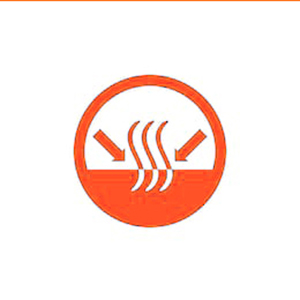 When you are thinking about first doing an install fault the average price. This is going to vary by your geographical location, will be between four to eight dollars per square foot. As well it typically has the least initial investment into it. But be warned, asphalt also has the highest level of maintenance of the three surfaces that we've covered.
When you are thinking about first doing an install fault the average price. This is going to vary by your geographical location, will be between four to eight dollars per square foot. As well it typically has the least initial investment into it. But be warned, asphalt also has the highest level of maintenance of the three surfaces that we've covered.After your initial installation happens about every three years you should expect to do a resurfacing as well. It is going to develop cracks and you have to apply a rubberized compound which stops the cracks from spreading throughout the driveway. Concrete comes in about dead metal for initial expense averaging anywhere from eight to twelve dollars per square foot. But it also has the lowest level of maintenance of the three hard surfaces, but be warned, salt can severely degrade concrete very quickly in as little as one or two seasons. Whether that salt is applied on sidewalks or other flat surfaces or if you're building a retaining wall made out of concrete masonry units or retaining wall blocks that are exposed to salt. Those that salt can degrade the face of the blocks and lead to the ultimate total collapse of the retaining wall.
A great alternative, if you need to build a retaining wall in an area that could be exposed to salt is to use boulders. They don't seem to suffer any damage from salt applications. Here is another fun fact about concrete some of the old-timers in the industry, actually call it crack Creek. Because during the curing process the water that was used for the initial pour evaporates or wicks out and that concrete then hasta is forced to shrink. That shrinking is what causes all concrete to crack to stop this from happening throughout the entire surface. Contractors saw joint lines into the concrete and those are nothing more than crack stops. That is why when you look at a concrete surface you see all these lines cut through the surface that's to keep the cracks from spreading.
Pavers, they come in at the top of the list for initial price averaging anywhere from twelve to twenty-four dollars per square foot and they do have a medium level of maintenance. Pavers can develop weeds the seeds can get in the joint spacing so periodically. You may have to spot spray your driveway sidewalk or patio with a crack and crevice to keep the weeds under control. Pavers can also have individual settlement, but that is the beauty of the system. Because they will settle but not crack and break that settlement is so easy to fix. You can literally pick the pavers out of the ground rebase them and put them straight back in place making pavers. The only system between the three that is a lifetime product with a medium level of maintenance.
Here is a neat pro tip for you, if you happen to get an oil stain or something on your paver driveway and you can't scrub it out. Simply pop the pavers in out of place flip them upside down and put them right back in place the bottom side of that paper will look like brand new in your driveway. You will never know you how to stain there. Last but not least, what we want to cover is stamped and colored concrete be careful of stamped colored concrete for a number of reasons.
One, is there is two ways of installing stamped colored concrete. We are going to focus on the coloring process. Sometimes companies will just surface spray the top of the concrete and what happens is when that concrete cracks. Which it inevitably will as you know at the first sign of that crack ruining the illusion. That you saw by going with stamped colored concrete in the first place. If you're going to go that route ask to get the entire concrete colored that way when the crack does form it will not pop out at you.
It extend the life of any hard surface you choose to use around your home. Every driveway is going to have base material underneath it. On average its four inches deep in that base material to six inches. Your base material is basically the cushion from the subgrade down here and your hard surface up here oftentimes. The subgrade we will be flexing and moving and when that subgrade flexes and moves it transmits that movement through the base material and destroys your hard surface. Especially if it is asphalt or concrete, when you deepen that base material you're adding an extra layer of protection as this base is moving. It is not able to transmit that movement to your hard surface and your hard surface the life of it.












